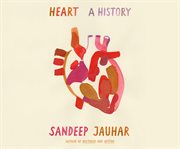Review by New York Times Review
IN RICHARD SELZER?S fictional story "Whither Thou Goest," a widow searches for the man who received her late husband's heart. The liver, kidney and corneas were in other people, but she needed to be with the heart. When she and the stranger ultimately connect, it's as if she's recovered lost love. I, on the other hand, always considered the heart a pump, much the way a doctor explained it to Sandeep Jauhar during his cardiology fellowship. "In the end," the doctor said, "cardiology is mostly a problem of plumbing." Jauhar quickly learned otherwise. His gripping new book, " Heart: A History," had me nearly as enthralled with this pulsating body part as he seems to be. The tone - a physician excited about his specialty - takes a sharp turn from his first two memoirs. The first, "Intern," was filled with uncertainty; the second, "Doctored," with disillusionment. Jauhar hooks the reader of "Heart" in the first few pages by describing his own health scare - an exam showed obstruction in the main artery feeding his heart. We don't hear more about his condition again until the final chapter, when a further assessment reveals premature ventricular contractions, "a mostly benign condition in which my heart flutters or does a sort of flip-flop when an extra, unexpected beat comes in." Sandwiched between his own heart tests is his journey to understand this organ that has mystified and frightened him ever since he was a child and heard about his grandfather's sudden death from a heart attack. Most chapters launch with a riveting scene: a patient in the thick of getting a heart transplant, say, or having open-heart surgery. You feel as if you're watching an episode of a medical television drama. Before we find out what happens, Jauhar takes us back in time to explain the discoveries that made all of these advances possible. That's where the stories get particularly strange and captivating. We read about Werner Forssmann, who attempted one of the first cardiac catheterizations in 1929. He did it on himself. Forssmann threaded a thin tube through his arm until it pierced his right atrium. Colleagues called him a quack. Almost 30 years later, he won the Nobel Prize in Physiology or Medicine. We go into an operating room where a young girl is having open-heart surgery, tethered to a heart-lung machine. Then we learn that the concept for this machine began with one doctor's brazen idea of connecting a patient to another person's blood supply. He was inspired by the way a fetus feeds off its mother. Six of seven cases ended with a death. Eventually, the heart-lung machine replaced the volunteers. The machine got off to a rough start too: 17 of the first 18 patients died. As one of the mid-20th-century researchers remarked, "You don't venture into the wilderness expecting to find a paved road." Fun facts are sprinkled throughout. The adult heart beats about three billion times between birth and death; the amount of blood that passes through an adult heart every week is enough to fill a swimming pool. Jauhar is at his best when writing about the heart. At times, he veers off topic. I commend him for volunteering at ground zero after the 9/11 attacks, but I would have preferred hearing more about the woman who suffered from stress-related heart ailments than the work he did identifying bodies. Jauhar visited the wellness center of Dean Ornish, the doctor who promoted a Mediterranean diet. I wanted to know Jauhar's expert opinion on how this regime compares with others. Despite these quibbles, "Heart" is chock-full of absorbing tales that infuse fresh air into a topic that is often relegated to textbooks or metaphors about pumps, plumbing or love. 'In the end, cardiology is mostly a problem of plumbing.' RANDI HUTTER EPSTEIN is the author of "Aroused: The History of Hormones and How They Control Just About Everything."
Copyright (c) The New York Times Company [July 11, 2019]
Review by Library Journal Review
Part personal memoir, part social history, part history of science, this work is always interesting. The ancient Egyptians and Greeks recognized that the heart was special, although they knew little about blood circulation. In the Middle Ages, it was turned into a symbol of love. And it was not until recent times that surgeons could "fix" hearts. Jauhar, a cardiologist, alternates stories of his own education and experiences with detailed descriptions of the first heart surgeries, the development of the artificial heart, and other modern medical miracles. Interspersed are biographical vignettes from the lives of researchers who succeeded, failed, and sometimes died. Patrick Lawler delivers a charming performance, reciting long strings of scientific terms with casual aplomb. VERDICT While squeamish individuals may find the detailed descriptions of medical procedures unsettling, this book should appeal to all others with an interest in biology or medicine. ["This captivating investigation deftly communicates the beauty, mystery, and scientific wonder of the human heart": LJ 6/15/18 review of the Farrar hc.]-I. Pour-El, Des Moines Area Technical Coll., Boone, IA © Copyright 2019. Library Journals LLC, a wholly owned subsidiary of Media Source, Inc. No redistribution permitted.
(c) Copyright Library Journals LLC, a wholly owned subsidiary of Media Source, Inc. No redistribution permitted.

